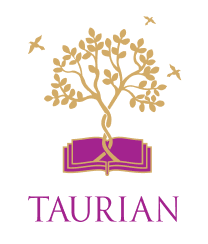Nutrition in Animals
Nutrition in animals is as important as it is for plants. Plants prepare their own food by the process of photosynthesis but animals cannot prepare their own food, hence they need to depend on plants or other animals for their food.
Animals derive their nutrition either by eating plants directly (herbivores), or indirectly by eating animals which have consumed plants (carnivores). Some animals feed on both plants and animals; these animals are termed as omnivores. All organisms require food for their survival and growth.
Food has different components, called nutrients, like carbohydrates, fats, minerals, proteins, and vitamins, which are required for the maintenance of the body. These components are complex and cannot be used directly, so they are broken down into simpler components by the process of digestion.
Nutrition in animals depends upon the feeding habits of the animals. The process of taking in food is called ingestion. The method of ingestion is different in different animals. For example-Bees and hummingbirds suck nectar from plants, python swallows its prey and cattle feed on grass.
Different feeding habits of animals are the result of evolution. Among the terrestrial animals, the earliest forms were large amphibians that ate fish. While amphibians like frogs fed on small fish and insects, the reptiles began feeding on other animals and plants.
The specialization of organisms towards specific food sources and of course specific ways of eating is one of the major causes of evolution of form and function. For example, the difference in mouthparts and teeth in whales, mosquitos, tigers, and sharks or distinct forms of beaks in birds, such as in hawks, woodpeckers, pelicans, hummingbirds, and parrots are results of adaptation to different types of eating by these animals.
Process of Nutrition in Animals
The process of nutrition in animals involves the following steps:
Ingestion
Ingestion is the process of taking in food.
Digestion
In this process, the larger food particles are broken down into smaller, water-soluble particles. There are physical or chemical for digesting food.
Absorption
The digested food is absorbed in the bloodstream through the intestinal wall.
Assimilation
The absorbed food is used for energy, growth and repair of the cells of the body.
Egestion
The undigested food is removed out of the body in the faeces. This process is known as egestion.
Nutrition in Simple Animals
Amoeba
- Amoeba ingests its food with the help of pseudopodia.
- The food is engulfed by forming a vacuole and is digested with the help of digestive enzymes.
- The digested food is absorbed directly into the cytoplasm by the process of diffusion.
- Energy is obtained from the absorbed food that helps in its growth.
- The undigested food is egested out of the body of amoeba by rupturing the cell wall.
Nutrition in animals | Human digestive system
Every living organism needs energy for performing various metabolic activities. Nutrition in plants is obtained by the process of photosynthesis. Nutrition in animals is obtained by eating plants or other animals. So, animal nutrition requires the intake of food and its utilization. The intake of food depends on the types of animals.
CLASSIFICATION OF ANIMALS ON THE BASIS OF THEIR EATING HABITS:
Animals can be classified on the basis of their eating habits as follows:
- Herbivorous animals.
- Carnivorous animals.
- Omnivorous animals.
- Parasites
- Scavengers
Food components consumed by the animals are complex substances. They cannot be utilized in the same way. So they need to be broken down into smaller particles. The process of breaking down of food components into smaller particles is known as digestion.
Digestion in Humans
Human beings take food through their mouth and then it passes through the human alimentary canal where food is being churned and mixed with certain enzymes for the proper breakdown. Nutrients are then absorbed and the remaining waste is ejected out.
The human alimentary canal or digestive tract can be divided into 6 parts moving down. First, the buccal cavity is present in the mouth area, where food is chewed with the help of teeth. Tongue mixes the saliva with food for the breakdown of food. Then it passes through the food pipe where the food is pushed down into the stomach by the movement of food pipe. When it reaches the stomach it is mixed with the gastric juice secreted by the wall of stomach for the further breakdown of food. At this stage food is transformed to a semi-solid form. It is then moved to the small intestine. Here food nutrients are absorbed by the villi, outgrowths of the small intestine and then transferred to the entire body through blood vessels. The remaining waste product is then transferred to the large intestine where excess water and salt is absorbed from the waste product. In the end, the final waste is ejected out through the anus. The above parts and process constitute the human digestive system.
NUTRITION IN GRASS EATING ANIMALS:
FEEDING AND DIGESTION IN AN AMOEBA:
Nutrition of animals basically deals with the intake of food and its utilization. In this article, we understood about the different types of animals. How they intake food? How they utilize the nutrients of food? This is what explains the animal nutrition.
By,
Middle School

